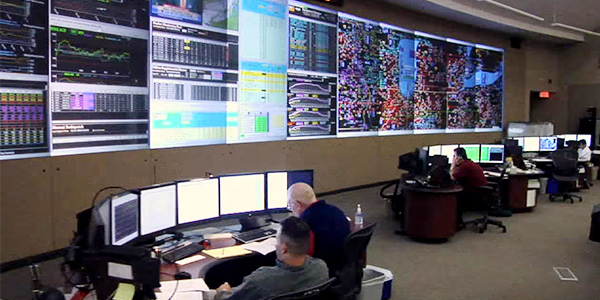By Amanda Durish Cook
MISO’s Steering Committee last week routed eight new market improvement proposals to stakeholders for debate and prioritization by voting.
During a Wednesday conference call, the Steering Committee said eight of the 11 ideas submitted met the criteria to be considered in the Integrated Roadmap list of market improvements due later this year. They will be ranked by staff and stakeholders alongside existing Roadmap ideas from previous years.
The Steering Committee does not debate the merits of Roadmap candidates, leaving that instead to the Market Subcommittee and the Resource Adequacy Subcommittee.
Main Line Ideas
The package contains three ideas from Main Line Generation, including a suggestion that MISO include energy efficiency measurements in its load forecasting method.
“At present, there is no clear articulation of the process by which energy efficiency measures are included in the demand side of the MISO Planning Resource Auction,” Main Line said.
Some Steering Committee members argued that the proposal was a waste of time because energy efficiency only accounts for about 312 MW of capacity in the footprint and that stakeholders have already spent enough time on the matter. Nevertheless, the item was moved for Roadmap consideration.
Main Line also recommended that MISO develop a way to verify the accuracy of coincident peak load forecasts provided by load-serving entities. While the RTO conducts a random sampling to check load forecasts, Main Line called the current method an “opaque process where stakeholders and MISO are not provided with a detailed understanding of the key drivers of the large majority of the load forecasts provided.”
Finally, Main Line asked that MISO adopt a sloped demand curve in its capacity auction. This is the first time the oft repeated call for a sloped demand curve has ever made it to the Roadmap process.
Monitor Recommendations
The committee advanced two ideas from Independent Market Monitor David Patton, who recommended the RTO use a lower generator shift factor (GSF) cutoff for transmission constraints with limited relief. MISO currently employs a 1.5% GSF cutoff to identify which generators to optimize in its dispatch when managing the flows on a constraint, but the Monitor said that policy “eliminates most or all of the economic relief available” for some constraints.
Patton also said MISO should reduce the unpredictability of its emergency pricing by implementing fixed default floors. Emergency pricing default floors are currently set by a supplier’s offer, which can result in them being either too high or too low under different circumstances, Patton said. He also said the RTO should better calculate megawatt limits on its North-South contract path during emergency pricing events.
Other Recommendations
Among the remaining ideas was a recommendation by Indianapolis Power & Light that MISO introduce a financial incentive for market participants providing primary frequency response, in line with the company’s unsuccessful 2016 FERC complaint. MISO had placed the item in its Roadmap “parking lot” in 2018, putting discussion on hold.
Clean Grid Alliance asked MISO to begin preparations to move to a “universal participation model” that would “eliminate the need for technology-specific generator models.” The group said the removal of standard generator models would allow any technically capable resource to participate in the RTO’s markets. CGA’s Natalie McIntire clarified that the group is only proposing that MISO scope the system changes required to forgo differing models sometime in the future.
Finally, MISO Market Strategy Adviser Lakisha Johnson said the RTO should focus on improving its scarcity pricing and price formation so it can meet needs across all hours and during scarcity pricing in nonemergency events. “Continuously improving scarcity pricing provides incentives for resources to follow MISO’s dispatch,” Johnson said. Some Steering Committee members criticized the idea as too broad.
Direct Path to Stakeholders
Three ideas from Patton were not included in the Roadmap package, instead going directly before other committees for discussion or because they were already being considered as part of the ongoing Resource Availability and Need (RAN) effort. Those ideas include:
- A recommendation that MISO improve capacity accreditation in the long term by establishing accreditation on resource availability “during high-load or tight supply periods.” Steering Committee members said the idea was best included in the RAN project, which already aims to evaluate the overall process of capacity accreditation.
- A recommendation that MISO improve outage data for capacity calculations by treating unreported outages and derates as forced outages and accounting for the fact that “forced outages may occur when a resource would not have been dispatched.” The Steering Committee said the issue is already being considered in RAN discussions.
- A suggestion that MISO improve the calculation of capacity requirements by factoring in the obligation to serve behind-the meter load and accounting for the lead times of load-modifying resources and other emergency resources in the loss-of-load expectation (LOLE) study. Patton said MISO’s LOLE studies “essentially assume that [LMRs and emergency resources] provide more reliability value to the system than they do in reality.”
Meanwhile, the eight forwarded ideas will go before stakeholders for ranking next month. MISO has planned an Aug. 8 stakeholder workshop to review the prioritization of improvements. A final report on how it will order the improvements in the Roadmap won’t be complete until November.




